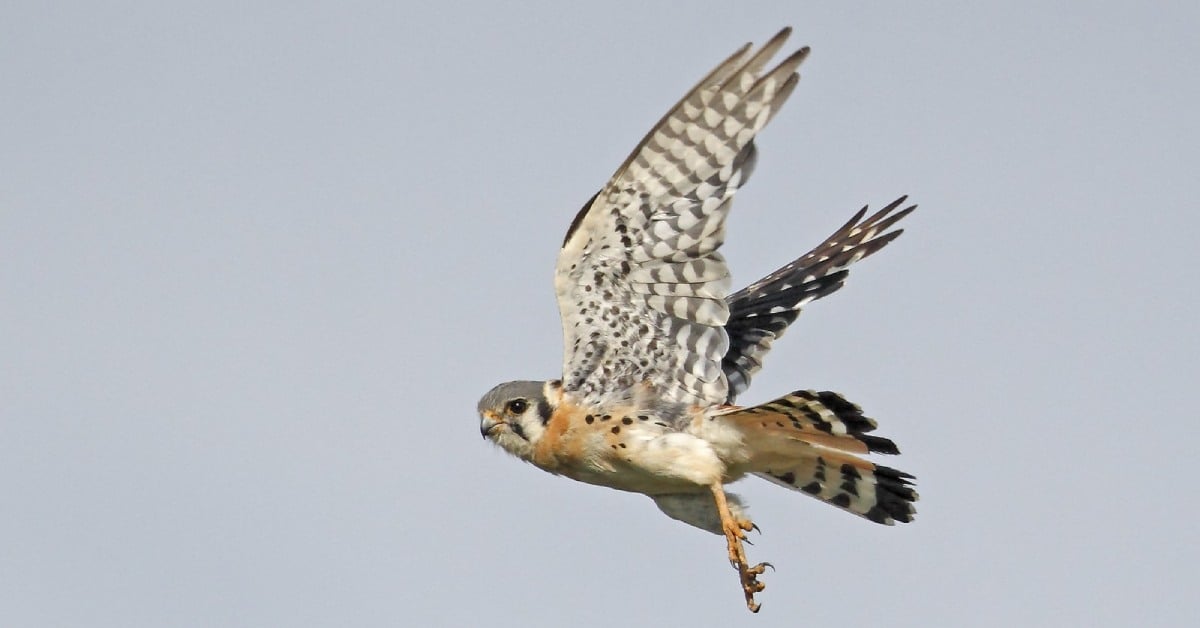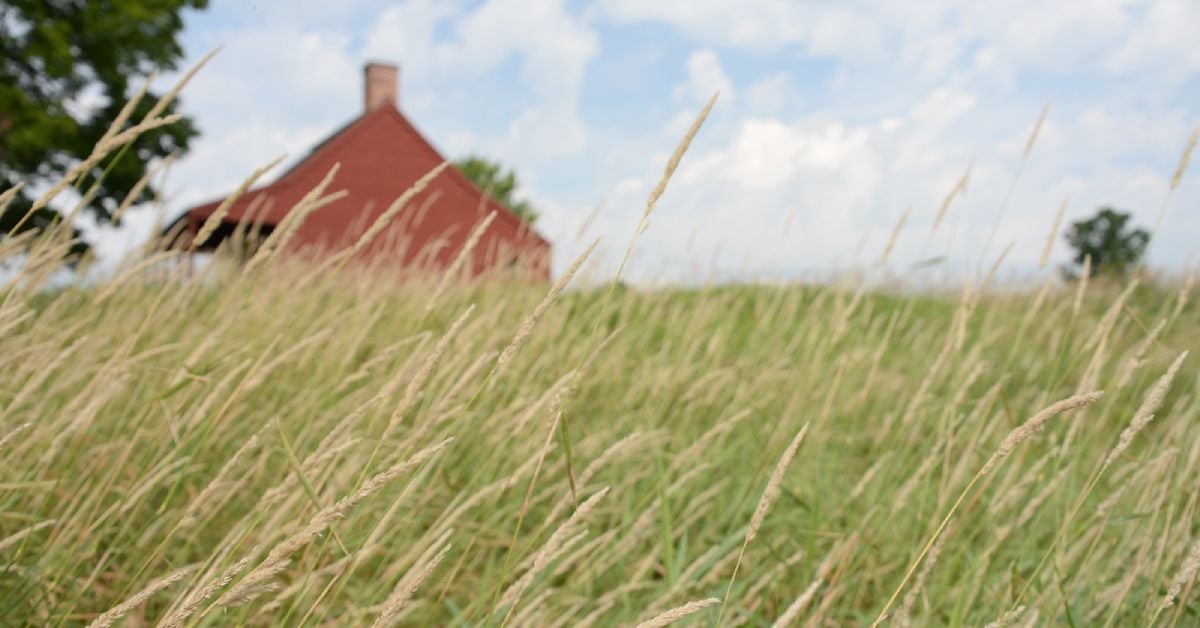7 Important Bird Areas & Bird Conservation Areas to Discover Near Saratoga
Whether you're an avid birder or a novice, the Saratoga region is a great place for birdwatching, particularly at the nearby Audubon Important Bird Areas (IBAs) and New York State Bird Conservation Areas (BCAs).

IBAs are sites that have been recognized by Audubon as crucial habitats for either breeding or non-breeding birds. These areas are identified by scientists as locations where either certain at-risk species dwell, where birds thrive in a specific kind of habitat, or where large populations of birds gather.
As for New York State's BCAs, they follow in Audubon's footsteps and act as protected sites where birds can thrive and where researchers, agencies, and birders can observe them on state-owned lands.
Interested in exploring some of these protected habitats yourself? There are several IBAs and BCAs within Saratoga County or a short drive away. Bring your binoculars and your telephoto lenses, as you'll have the opportunity to watch some common local species, as well as glimpse some remarkable rare and threatened birds.
Washington County Grasslands (IBA) - Perfect for Observing At-Risk Species
The Washington County Grasslands consists of the Fort Edward Grasslands IBA (13,000 acres), the Washington County Grasslands IBA (286 acres), and private agricultural lands. If you're interested in catching sight of threatened and endangered species, then you'll want to go birding here.
Species to look for: While you can try your hand at spotting fairly common species such as Northern Cardinals, Red-winged Blackbirds, Eastern Meadowlarks, Bobolinks, and Killdeer, the Grasslands are particularly noted for their population of rarer species such as Henslow's Sparrows, Golden Eagles, and Upland Sandpipers.
The Grasslands are also known as an excellent place to catch sight of wintering raptors and songbirds, such as Snow Buntings, Northern Shrike, Snowy Owls, and Peregrine Falcons. The most notable residents of the Grasslands are the threatened Northern Harriers and the endangered Short-eared Owls, which draw many birders to this Important Bird Area.
How to get there: There are three public viewing sites in the Grasslands, but the Alfred Z. Solomon Grassland Bird Viewing Area is a great place to start. Take Exit 17N on the Northway, and follow Route 197 through Fort Edward. Once you leave Fort Edward, continue for two miles before turning left onto Route 42. The viewing area will be about 0.7 miles ahead on the right.
Entrance fee: none
Moreau Lake Forest (IBA) and Moreau Lake (BCA) - a Serene Place to Watch Common Species
Moreau Lake Forest is a large Important Bird Area that contains Moreau Lake State Park. New York's Moreau Lake Bird Conservation Area, in turn, is located within the State Park. Much of the region is composed of forest, and both Moreau Lake and the Hudson River provide wonderful habitats for birds.
Species to look for: You'll want to keep your eyes peeled for the bright orange flashes of Baltimore Orioles, as well as Black-billed Cuckoos, Rosebreasted Grosbeaks, Eastern Wood Pewees, Wood and Hermit Thrushes, Wild Turkeys, Blue-headed Vireos, Pine and Black-Throated Green Warblers, Pileated Woodpeckers, Golden-Crowned Kinglets, White-throated Sparrows, and Red-breasted Nuthatches.
Want to cross a rare species off your "to-see" list? Threatened or endangered species found near Moreau Lake include the Northern Harrier, Cooper's Hawk, Common Loon, Osprey, and Pied-billed Grebe. Bald Eagles can also be spotted in the winter months.
How to get there: Take Exit 17S on the Northway, then turn right onto Old Saratoga Road. In about 0.7 miles, you'll see the entrance to Moreau Lake State Park on your right.
Entrance fee: The State Park charges a vehicle entrance fee between the end of May and the beginning of September, as well as on weekends in late spring and early fall. The price varies by season. The rest of the year, birding in the State Park is free.
Saratoga National Historic Park (IBA) - Birdwatching for History Lovers

If you're both a history buff and a birder, you'll want to visit Saratoga National Historical Park in Stillwater. The site of the Battle of Saratoga is an excellent place to birdwatch, as its 2886 acres contain hills, valleys, grasslands, woods, and the Hudson River. Grassland birds are particularly notable in this Important Bird Area.
Species to look for: Many bird species call the Saratoga Battlefield their permanent or seasonal homes, including the Eastern Bluebird, Bobolink, Killdeer, Eastern Meadowlark, and Great Blue Heron, as well as several species of sandpipers, ducks, flycatchers, woodpeckers, vireos, thrushes, sparrows, warblers, and hawks.
How to get there: From Saratoga Springs, follow Lake Ave/Route 9P past the Northway and around the northern tip of Saratoga Lake. Turn left onto Cedar Bluff Road/Route 71 and follow for 4.3 miles until the road ends. Turn right onto Route 32 and the entrance to the park will be up ahead on the left.
Entrance fee: There's no charge to visit the Battlefield. The tour road is open from April 1 through November 30, from 9 am to 5 pm, while the trails are open from sunrise to sunset year-round. In the winter, however, be prepared to trek through snow, as the trails aren't shoveled.
Saratoga Spa State Park (BCA) - a Bird Haven Within Saratoga Springs
Visiting Saratoga Springs? You don't have to even leave the city to visit a Bird Conservation Area. Spa State Park has designated large portions of its land, which encompasses wetlands, woods, mineral springs, and the Geyser and Kayaderosseras Creeks, as BCAs.
Species to look for: There are 170 species in all within this prime birding area, with 97 of them breeding there. In particular, Saratoga Spa BCA boasts a wide array of Neotropical migratory songbirds; 54 of New York's 75 species have observed by birders.
How to get there: The park's main entrance is located on Route 9, just south of Downtown Saratoga.
Entrance fee: Saratoga Spa State Park is open year-round and charges a $10 vehicle entrance fee daily between late May and early September, and on weekends in May, September, and early October.
Carters Pond (BCA) - a Great Spot for Sighting Waterbirds
Carters Pond BCA, also known as the Carters Pond Wildlife Management Area, is located in the town of Greenwich in Washington County. It's comprised of varied wetland and upland habitats, making this a great place to watch waterbirds. Birders can explore marsh, swamp, forests, grasslands, and shrublands while observing species.
Species to look for: Threatened species at Carters Pond include the Pied-billed Grebe and the Least Bittern. Other birds who thrive in this water-rich habitat include Great Blue Heron, Common Moorhen, American Coot, American Black Duck, Virginia Rail, Marsh Wren, Blue-Winged Teal, American Woodcock, and Osprey.
How to get there: Follow Route 29 out of Saratoga Springs for about 23 miles. Turn left onto County Road 49; the trailhead for Carters Pond Nature Trail will be about 1.5 miles ahead on the right.
Entrance fee: none
Vischer Ferry (IBA) (BCA) - a Birding Destination Along the Erie Canal
Head south to the Mohawk River in Clifton Park to go birdwatching at The Vischer Ferry Nature Preserve, also known as the Vischer Ferry BCA. This protected freshwater wetland is a haven for waterfowl and other marsh birds.
Species to look for: Birds that call the wetlands home include Green Heron, American Bittern, Sora, and Virginia Rail, as well as other species of herons and egrets that stop by on their fall migrations.
Migratory birds are also known to make appearances in Vischer Ferry BCA's forest and shrublands, including species of warblers, swallows and flycatchers, Common Nighthawks, and Rusty Blackbirds.
How to get there: Take Exit 8 on the Northway and follow Crescent Road east for about 2 miles. Turn left onto Van Vranken Road. When the road ends, the main entrance will be straight ahead.
Entrance fee: none
Lake George Peregrine Site (IBA) - a Crucial Nesting Place for Falcons
This Important Bird Area is actually composed of multiple locations around the lake where Peregrine Falcons are known to nest. These sites are located near the northern and central sections of the Lake George, at areas near Shelving Rock, Roger's Rock, Anthony's Nose, and more. The terrain has many cliffs and outcroppings, making this an ideal nesting area for the falcons.
Species to look for: Peregrine Falcons are the main attraction at these sites. There are an unusually large number of pairs who nest here, so be sure to proceed with caution and avoid disturbing them.
How to get there: The largest area is near Shelving Rock; to reach this location, take Exit 20 on the Northway and follow Route 149 E. After 6 miles, turn left onto Buttermilk Falls Road. In 3 more miles, when the road ends, turn left onto Sly Pond Road. This road becomes Shelving Rock Falls Road, from which several trails are accessible.
Entrance fee: none
Learn about bird populations and conservations efforts near Saratoga >>
Sources:
https://ny.audubon.org/conservation/important-bird-areas
http://www.dec.ny.gov/animals/30935.html
http://www.southernadirondackaudubon.org/birding/Birding%20Locations/WashCounty/washcounty.html
https://irma.nps.gov/NPSpecies/Reports/SpeciesList/Species%20Full%20List/SARA/2/true



